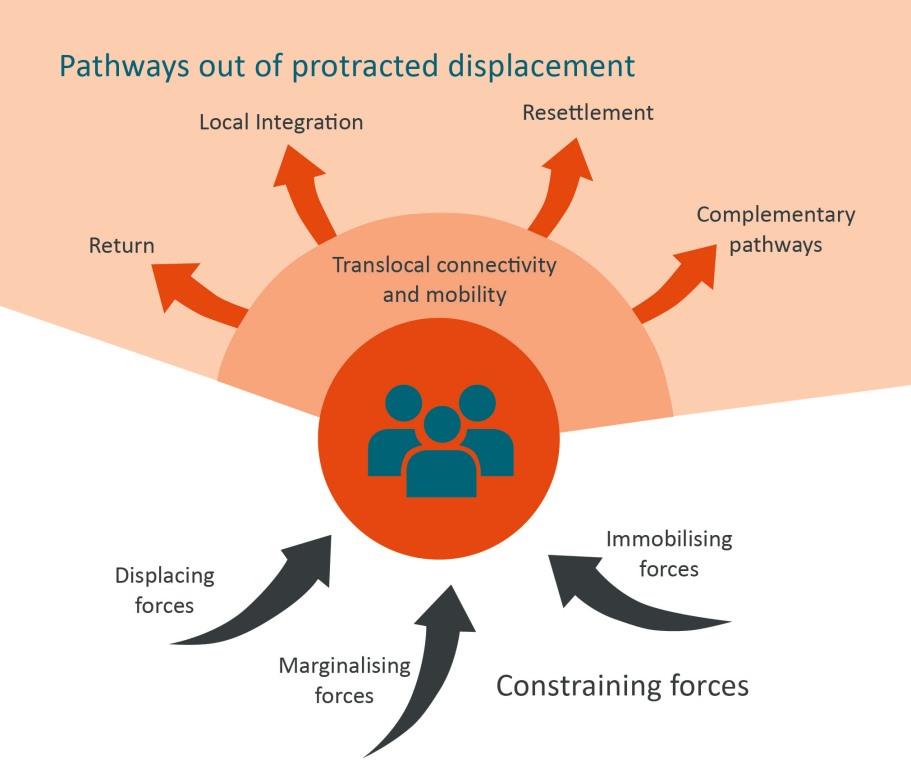TRAFIG practice note no. 1
Exploring new solutions to protracted displacement
According to the UNHCR’s latest estimates 15.9 million people are living in protracted refugee situations at the end of the year 2018. This corresponds to more than three-quarter of all refugees. Resolving protracted refugee situations is a fundamental global challenge, yet progress remains stalled.
TRAFIG aims to contribute to the development of alternative solutions to protracted displacement. This practice note summarizes our approach.
The 2-pager highlights four key points:
- Protracted displacement situations arise when and where durable solutions are not made available or progress towards achieving these is stalled.
- In the absence of long-term solutions provided by states, displaced people are engaged in creating and finding solutions on their own, building on multiple local and translocal social networks.
- Translocal connectivity and mobility can form part of a solution to protracted displacement.
- New approaches are needed to better utilise and support practices applied by displaced people in their everyday lives, in particular their translocal connectivity and mobility.

Authors: Marion Noack, Martin Wagner, Benjamin Etzold
Cite as: Noack, M. et al. (2019). Transnational Figurations of Displacement. Exploring new solutions to protracted displacement (TRAFIG practice note 1). Bonn: BICC. DOI: 10.5281/zenodo.5841910
You can download TRAFIG practice note no. 1 here.
This practice note is based on: Etzold, B. et al. (2019). Transnational Figurations of Displacement - Conceptualising protracted displacement and translocal connectivity through a process-oriented perspective (TRAFIG working paper 1). Bonn: BICC. DOI: 10.5281/zenodo.5840818.